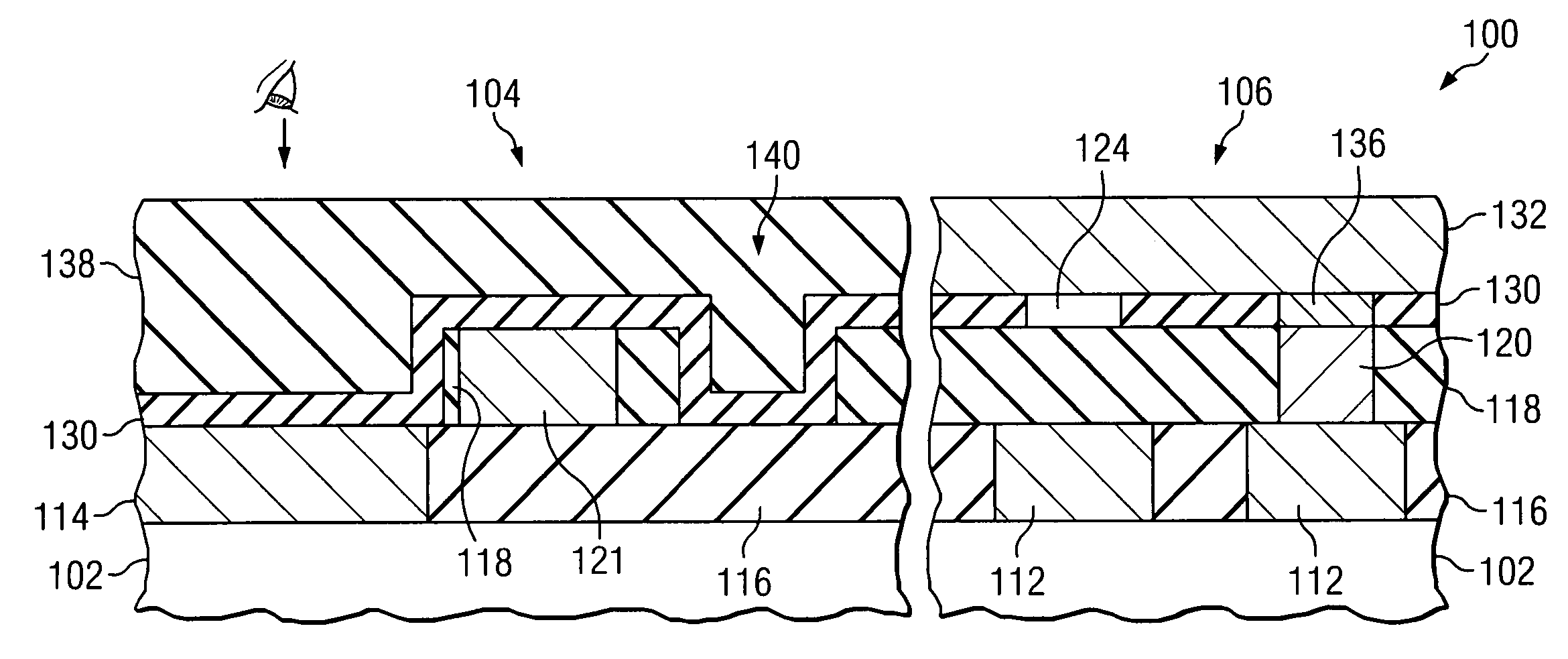Alignment of MTJ stack to conductive lines in the absence of topography
a technology of conductive lines and mtj stacks, applied in the direction of semiconductor devices, semiconductor/solid-state device details, electrical devices, etc., can solve problems such as process disconnection, and achieve the effect of greater length
- Summary
- Abstract
- Description
- Claims
- Application Information
AI Technical Summary
Benefits of technology
Problems solved by technology
Method used
Image
Examples
Embodiment Construction
[0023]The making and using of the presently preferred embodiments are discussed in detail below. It should be appreciated, however, that the present invention provides many applicable inventive concepts that can be embodied in a wide variety of specific contexts. The specific embodiments discussed are merely illustrative of specific ways to make and use the invention, and do not limit the scope of the invention.
[0024]The present invention will be described with respect to preferred embodiments in a specific context, namely an MRAM device. The invention may also be applied, however, to other resistive memory devices or semiconductor devices with opaque material layers.
[0025]Embodiments of the present invention provide novel methods of forming alignment marks for the opaque MTJ stack of an MRAM device. With reference now to FIG. 1, there is shown a cross-sectional view of a semiconductor device 100 (also referred to herein as a die 100) comprising a workpiece 102. The workpiece 102 ma...
PUM
 Login to View More
Login to View More Abstract
Description
Claims
Application Information
 Login to View More
Login to View More - R&D
- Intellectual Property
- Life Sciences
- Materials
- Tech Scout
- Unparalleled Data Quality
- Higher Quality Content
- 60% Fewer Hallucinations
Browse by: Latest US Patents, China's latest patents, Technical Efficacy Thesaurus, Application Domain, Technology Topic, Popular Technical Reports.
© 2025 PatSnap. All rights reserved.Legal|Privacy policy|Modern Slavery Act Transparency Statement|Sitemap|About US| Contact US: help@patsnap.com



